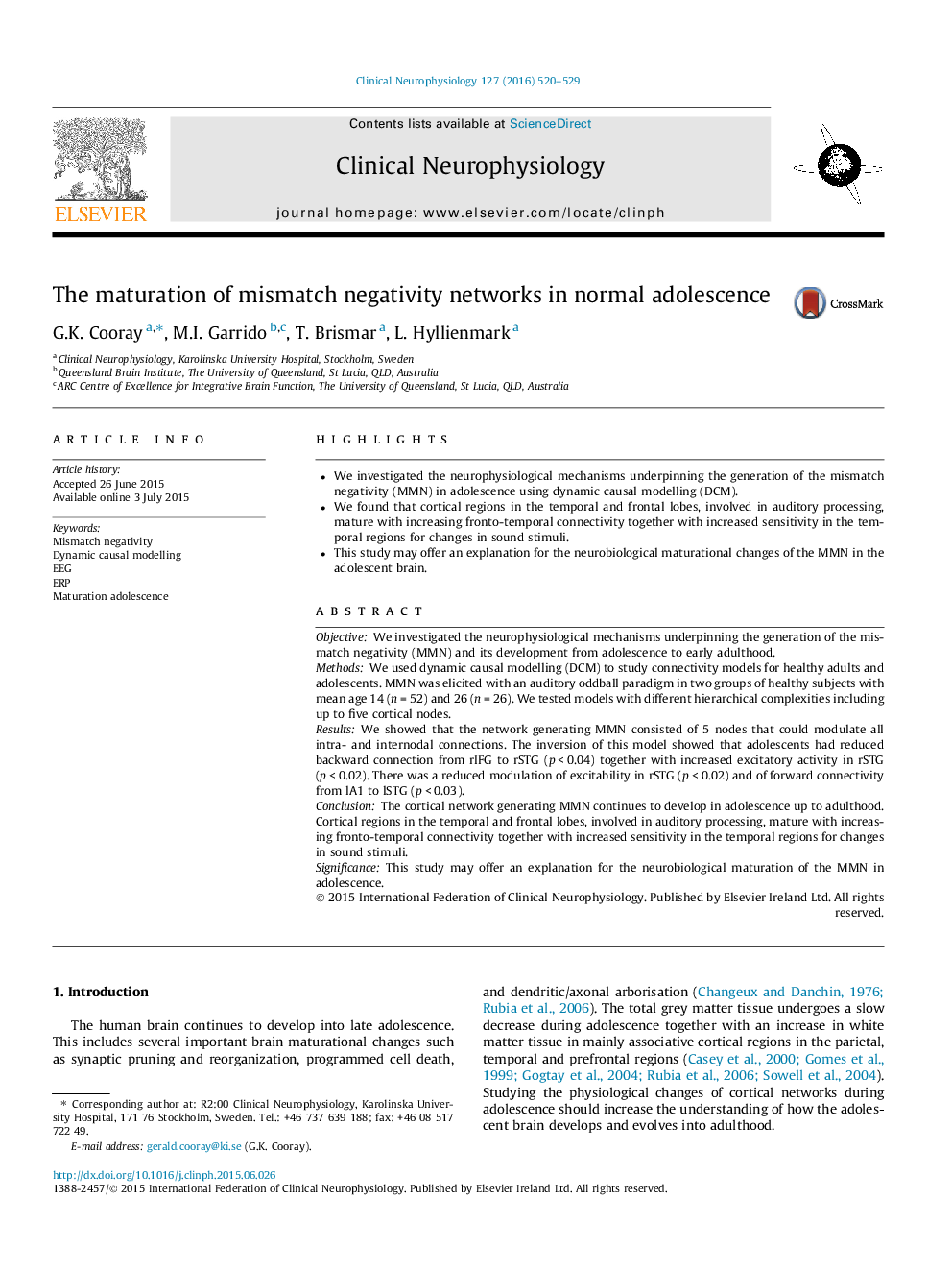| Article ID | Journal | Published Year | Pages | File Type |
|---|---|---|---|---|
| 6007918 | Clinical Neurophysiology | 2016 | 10 Pages |
â¢We investigated the neurophysiological mechanisms underpinning the generation of the mismatch negativity (MMN) in adolescence using dynamic causal modelling (DCM).â¢We found that cortical regions in the temporal and frontal lobes, involved in auditory processing, mature with increasing fronto-temporal connectivity together with increased sensitivity in the temporal regions for changes in sound stimuli.â¢This study may offer an explanation for the neurobiological maturational changes of the MMN in the adolescent brain.
ObjectiveWe investigated the neurophysiological mechanisms underpinning the generation of the mismatch negativity (MMN) and its development from adolescence to early adulthood.MethodsWe used dynamic causal modelling (DCM) to study connectivity models for healthy adults and adolescents. MMN was elicited with an auditory oddball paradigm in two groups of healthy subjects with mean age 14 (n = 52) and 26 (n = 26). We tested models with different hierarchical complexities including up to five cortical nodes.ResultsWe showed that the network generating MMN consisted of 5 nodes that could modulate all intra- and internodal connections. The inversion of this model showed that adolescents had reduced backward connection from rIFG to rSTG (p < 0.04) together with increased excitatory activity in rSTG (p < 0.02). There was a reduced modulation of excitability in rSTG (p < 0.02) and of forward connectivity from lA1 to lSTG (p < 0.03).ConclusionThe cortical network generating MMN continues to develop in adolescence up to adulthood. Cortical regions in the temporal and frontal lobes, involved in auditory processing, mature with increasing fronto-temporal connectivity together with increased sensitivity in the temporal regions for changes in sound stimuli.SignificanceThis study may offer an explanation for the neurobiological maturation of the MMN in adolescence.
